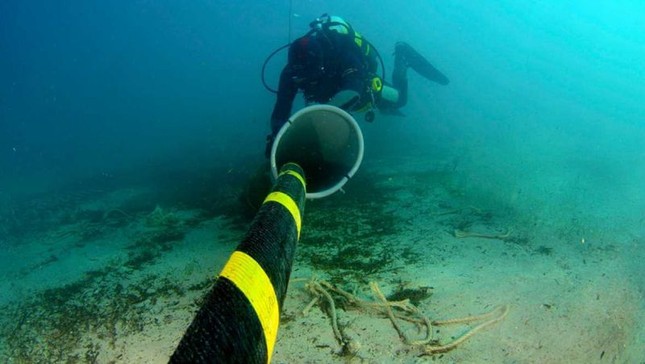Two new undersea fiber optic cable lines of Vietnam are about to operate
- Tram Ho
A representative of Viettel network said that the ADC cable route has now been completed and is expected to be put into operation in the third quarter of 2023.
ADC is an undersea fiber optic cable with a length of 9,800km underground cable, capacity over 140Tbps, using the most modern transmission technology today, helping to connect countries/territories in the Asia-Pacific region. Duong with a total initial investment of 290 million USD.
When operating and exploiting, the ADC cable route will add 18Tbps to Viettel’s total international connection capacity, contributing to providing a large amount of high-speed connection from Vietnam to internationally.
Along with ADC optical cable, the SJC2 undersea fiber optic cable system will also be put into operation in 2023, according to VNPT’s share.
This is an undersea fiber optic cable system about 10,500 km long with an initial design capacity of 144Tbps, built and operated by VNPT and international partners. SJC2 connects 9 countries in Asia, has all 11 landing points, the landing station in Vietnam is located in Quy Nhon.

4/5 of Vietnam’s current undersea fiber optic cable lines are having partial or total problems.
According to Mr. Nguyen Hong Thang, Director of the Department of Telecommunications, when SJC2 and ADC fiber optic cables come into operation, Vietnam’s Internet going internationally will be supplemented with a huge capacity.
Vietnam is experiencing the most serious undersea fiber optic cable breakdown in history when four out of five undersea fiber optic lines have a partial or complete breakdown, including AAG, APG, AAE-1 and IA. In which, the APG route completely lost connection to Singapore and Hong Kong.
According to Mr. Thang, the incident caused a disconnection of about 75% of international traffic on undersea fiber optic cables. Facing this situation, the Ministry of Information and Communications has directed telecommunications businesses to share and rescue international traffic for each other. In which, Viettel has shared 100Gbps of international Internet connection capacity with VNPT.
In addition, the network operators also increase the Internet capacity to go internationally via the mainland and take measures to balance the capacity.
A representative of the Ministry of Information and Communications said that up to now, with many handling options, businesses have compensated for about 50% of international travel capacity. “Thus, the service quality of telecommunications businesses has been gradually improved, solving the problem of connection loss, but the speed may be slow at peak hours”, a representative of the Ministry of Information and Communications shared. shall.
Mr. Nguyen Hong Thang added that, along with troubleshooting, Vietnam must deploy more undersea fiber optic cables with many different connection directions jointly built by Vietnamese enterprises.
Specifically, according to the plan to 2025, Vietnam strives to have 2-4 new undersea fiber optic cable routes, by 2030 strives for 4-6 more fiber optic cable routes.
A Viettel representative further shared, looking at the history, it can be seen that every year in Vietnam, there are about 10 breaks in sea cables, the average break time is 1 month because the repair of undersea optical cables is extremely complicated, must apply for a license. permission to enter and exit the territory of the countries the cable passes through.
Therefore, usually only 3/5 undersea cable lines operate simultaneously. Against that background, Viettel has planned to deploy 4 more sea cable routes from now to 2030.
Three fiber optic lines have repair schedules
According to the new tentative plan announced to carriers in Vietnam, the problem on the S6 branch of the APG route will be fixed between March 23-27, the fault on the S9 branch connecting to Singapore and Japan will be repaired in April 2023.
The incident on the IA route to Singapore is expected to be fixed between April 5-13. Problems on the AAG route are also expected to be fixed from February 26 to April 15. Particularly, AAE-1 optical cable does not have a specific repair schedule.
Source : Genk
